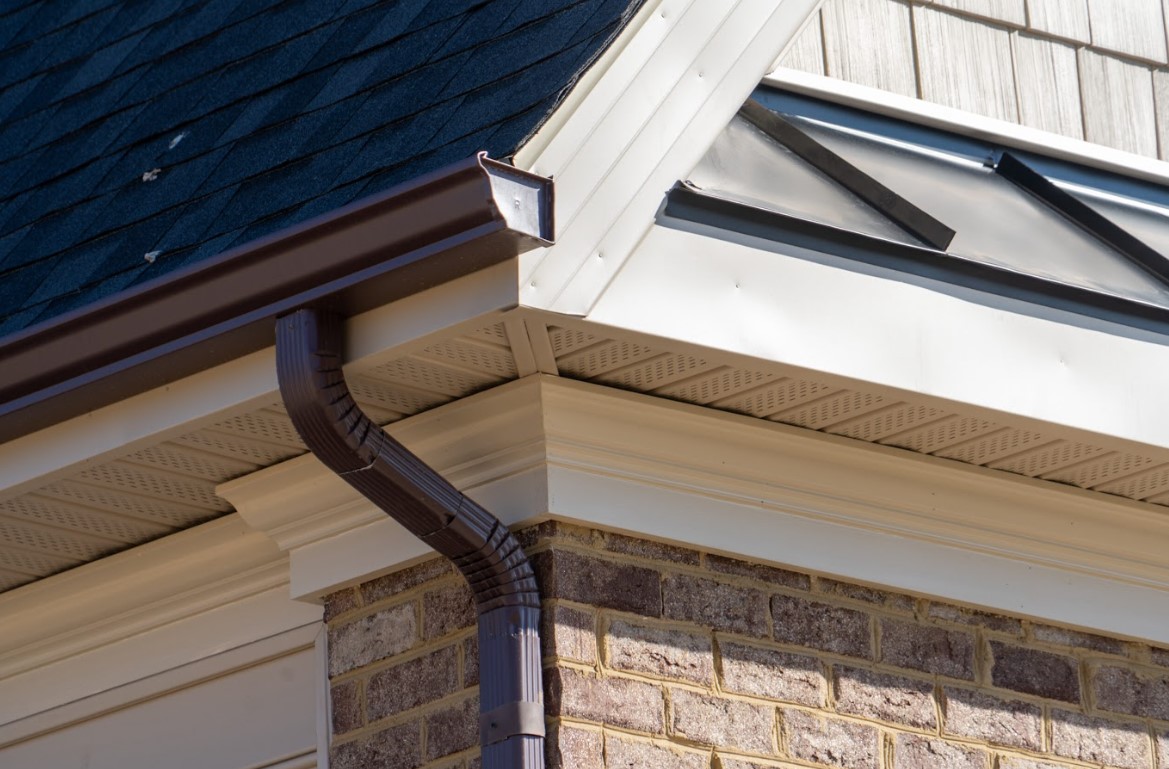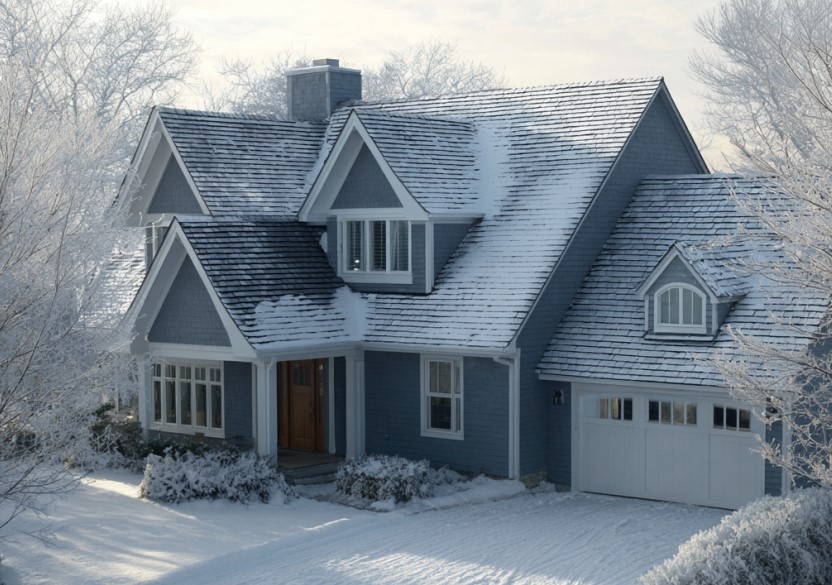Standing Seam vs Corrugated Metal Roofing: Comparing Styles
July 14, 2025
Written By
All Trades Restoration Services

Metal roofing has become an increasingly popular choice for homeowners in the Midwest, offering durability, energy efficiency, and a long lifespan that can rival or exceed traditional asphalt shingles. Two of the most common types of metal roofing are standing seam and corrugated panels. Both offer unique benefits and considerations, making it important for homeowners to understand the differences before committing to an installation or replacement.
At All Trades Restoration, we specialize in metal roofing solutions throughout Missouri and the broader Midwest. We help homeowners select the right roofing system for their climate, budget, and aesthetic goals, ensuring long-term protection and performance. This guide explores the differences between standing seam and corrugated metal roofing, highlighting which style might be best for your home.
Why Metal Roofing is a Smart Choice for Midwest Homes
The Midwest is known for its extreme and varied weather, from harsh winter snow and ice to intense summer storms with high winds and hail. Metal roofing performs exceptionally well in this environment for several reasons:
- Durability: Metal roofs can withstand wind gusts, hail, and heavy snow loads without significant damage.
- Longevity: With proper installation and maintenance, metal roofs can last 40–70 years, far exceeding asphalt shingles.
- Energy Efficiency: Reflective metal surfaces reduce heat absorption, keeping homes cooler in the summer.
- Low Maintenance: Metal is resistant to rot, insect damage, and fire, reducing long-term upkeep.
Standing Seam Metal Roofing
Standing seam metal roofing is characterized by raised vertical panels with interlocking seams. The design conceals fasteners, giving it a sleek, modern appearance and excellent weather resistance.
Benefits of Standing Seam Roofing
- Water Resistance: Raised seams prevent water infiltration, making it ideal for areas with heavy rain or snow.
- Wind Resistance: Interlocking panels are highly secure, reducing the risk of panels lifting during strong storms.
- Longevity: Typically made from steel, aluminum, or copper, standing seam roofs are highly durable and can last decades with minimal maintenance.
- Aesthetic Appeal: Offers a clean, modern look that works well with both residential and commercial architecture.
Considerations
- Higher Cost: Standing seam roofs are more expensive than corrugated options due to materials and installation complexity.
- Professional Installation Required: Precise installation is crucial to maintain weather-tight seams. DIY is generally not recommended.
Standing seam metal roofing is particularly suited for modern homes, high-end residential properties, and areas prone to heavy storms, where performance and longevity are top priorities.
Corrugated Metal Roofing
Corrugated metal roofing features panels with alternating ridges and grooves, which provide structural strength and a distinctive, industrial appearance. This style has been used for decades in agricultural, commercial, and residential settings.
Benefits of Corrugated Roofing
- Affordability: Corrugated panels are typically less expensive than standing seam options, making them a cost-effective choice.
- Durability: Strong enough to handle moderate wind and hail conditions.
- Ease of Installation: Panels are lighter and easier to install, which can reduce labor costs and project time.
- Versatility: Works well for sheds, barns, and some residential applications where a rustic or industrial look is desired.
Considerations
- Exposed Fasteners: Corrugated panels often have visible screws or bolts, which can loosen over time and create potential leak points.
- Aesthetic Limitations: While durable, corrugated panels may not suit all home styles.
- Less Weather Protection: Water can potentially infiltrate at fasteners if not properly sealed, especially during heavy storms.
Corrugated metal roofing is ideal for budget-conscious projects, agricultural buildings, and certain residential properties where style preferences or practicality favor simplicity and affordability.
Comparing Performance in the Midwest
When selecting a metal roof in Missouri and the Midwest, consider the local climate:
- Storms and High Winds: Standing seam roofs offer superior wind resistance, while corrugated panels perform well in moderate conditions but may require extra reinforcement for severe storms.
- Snow and Ice: Standing seam roofs shed snow and ice more efficiently due to raised seams, reducing the risk of ice dams. Corrugated panels are also effective but may retain snow in valleys if not properly installed.
- Rainfall: Standing seam roofs provide excellent water resistance, while corrugated panels depend on proper sealing and overlap to prevent leaks.
- Maintenance Needs: Standing seam roofs require minimal maintenance, while corrugated roofs may need periodic fastener checks and resealing.
Cost Considerations
- Standing Seam Roofing: Typically ranges from $10 to $20 per square foot, including materials and professional installation.
- Corrugated Roofing: Usually ranges from $5 to $10 per square foot, making it a more budget-friendly option.
While the upfront cost for standing seam is higher, many homeowners find the long-term durability and lower maintenance justify the investment.
Aesthetic Considerations
- Standing Seam: Sleek, modern, and uniform appearance; ideal for contemporary home designs. Available in a variety of finishes, including matte, metallic, and painted colors.
- Corrugated Panels: Offers a rustic or industrial charm; best suited for barns, garages, or homes with a farmhouse or utilitarian style.
Why Choose Professional Installation
Both standing seam and corrugated metal roofs require proper installation to maximize performance. Mistakes can lead to leaks, panel damage, or reduced longevity. At All Trades Restoration, our team provides:
- Expert assessment to determine the right roofing style for your home and climate.
- Precise installation that ensures panels are properly aligned, sealed, and secured.
- Storm and weather preparation, including reinforcement for high winds and heavy snow.
- Long-term support, including inspections and maintenance tips to keep your roof performing optimally.
Professional installation ensures your metal roof withstands the Midwest’s unpredictable weather, protecting your home for decades.
Conclusion
Choosing between standing seam and corrugated metal roofing depends on your budget, style preferences, and the performance you need in Missouri’s weather.
- Standing Seam: Ideal for homeowners seeking long-term durability, superior storm resistance, and a modern aesthetic.
- Corrugated Panels: Best for those prioritizing affordability, ease of installation, and a rustic or industrial style.
Both options provide excellent protection against rain, wind, and snow when installed correctly. At All Trades Restoration, we help homeowners make the right choice, manage installation, and maintain their roofs for lasting performance.
If you’re considering a metal roof for your Missouri home, contact All Trades Restoration today for a consultation. Our team will help you select the best roofing style, ensure professional installation, and provide ongoing support to protect your investment.
Recent Articles

Residential Roofing
Roofing Contractor in St. Peters: Finding the Right Professional
Find the right roofing contractor in St. Peters with expert tips from All Trades Restoration Services. Learn what to look for to protect your home and ensure lasting roof quality.
November 17, 2025

Residential Gutters
Gutter Systems in O'Fallon: Keeping Your Home Dry and Protected
Learn how expert gutter systems in O’Fallon protect your home from leaks, erosion, and foundation damage. Trusted installation and repair from All Trades Restoration Services
November 11, 2025

Residential Roofing
Winter Roof Preparation in Missouri: Getting Your Home Ready
As the winter chill sets in across Missouri, it's crucial to prepare your roof for the season's harsh conditions. Protect your home with our expert tips on winter roof preparation in Missouri.
November 4, 2025

Residential Roofing
Best Roofing for Hail in Missouri: Protecting Your Home
Missouri homeowners know the importance of protecting their homes from severe weather, especially hail. Explore the best roofing solutions to safeguard your property and withstand nature's unpredictable forces.
November 1, 2025

